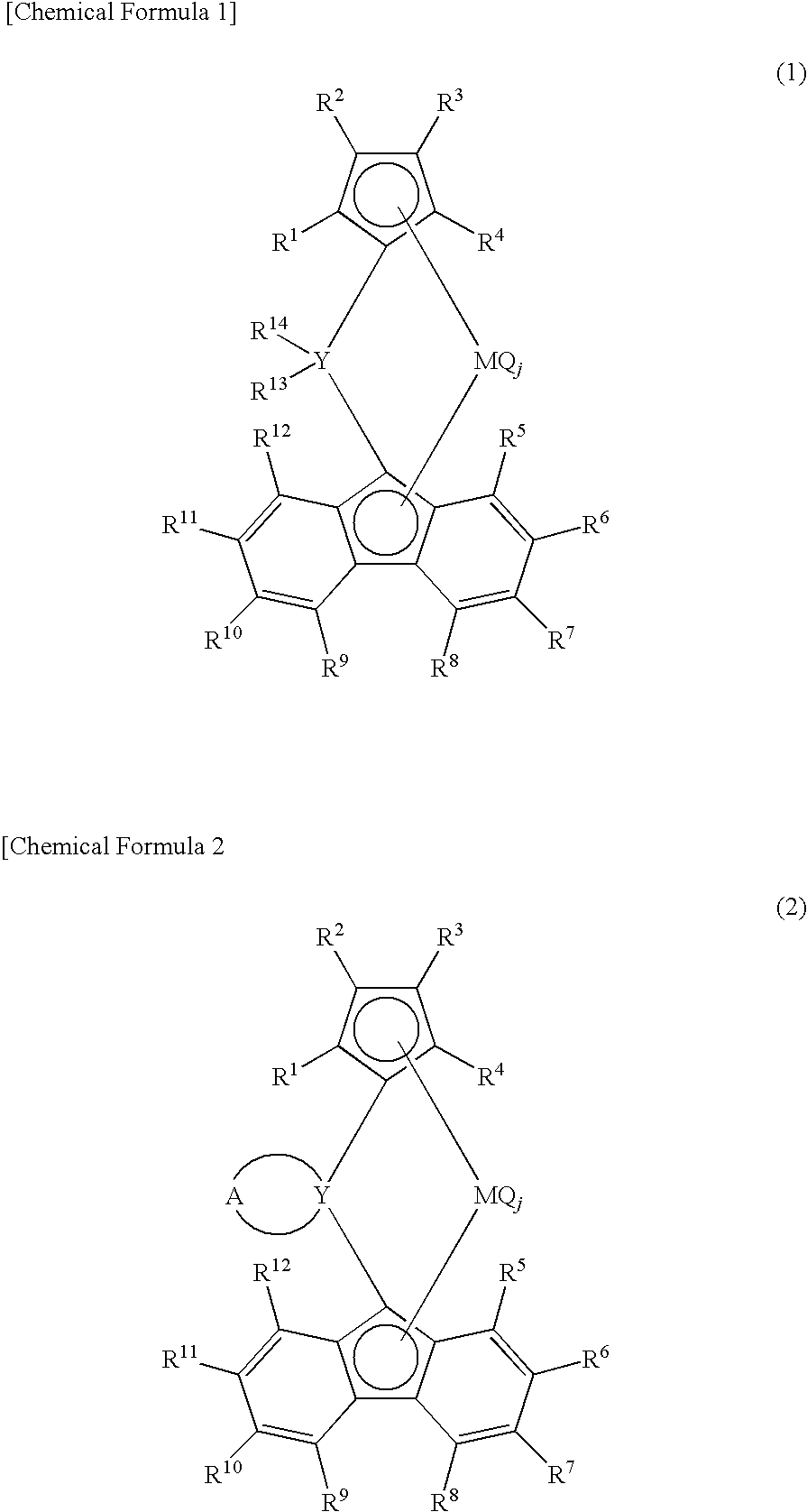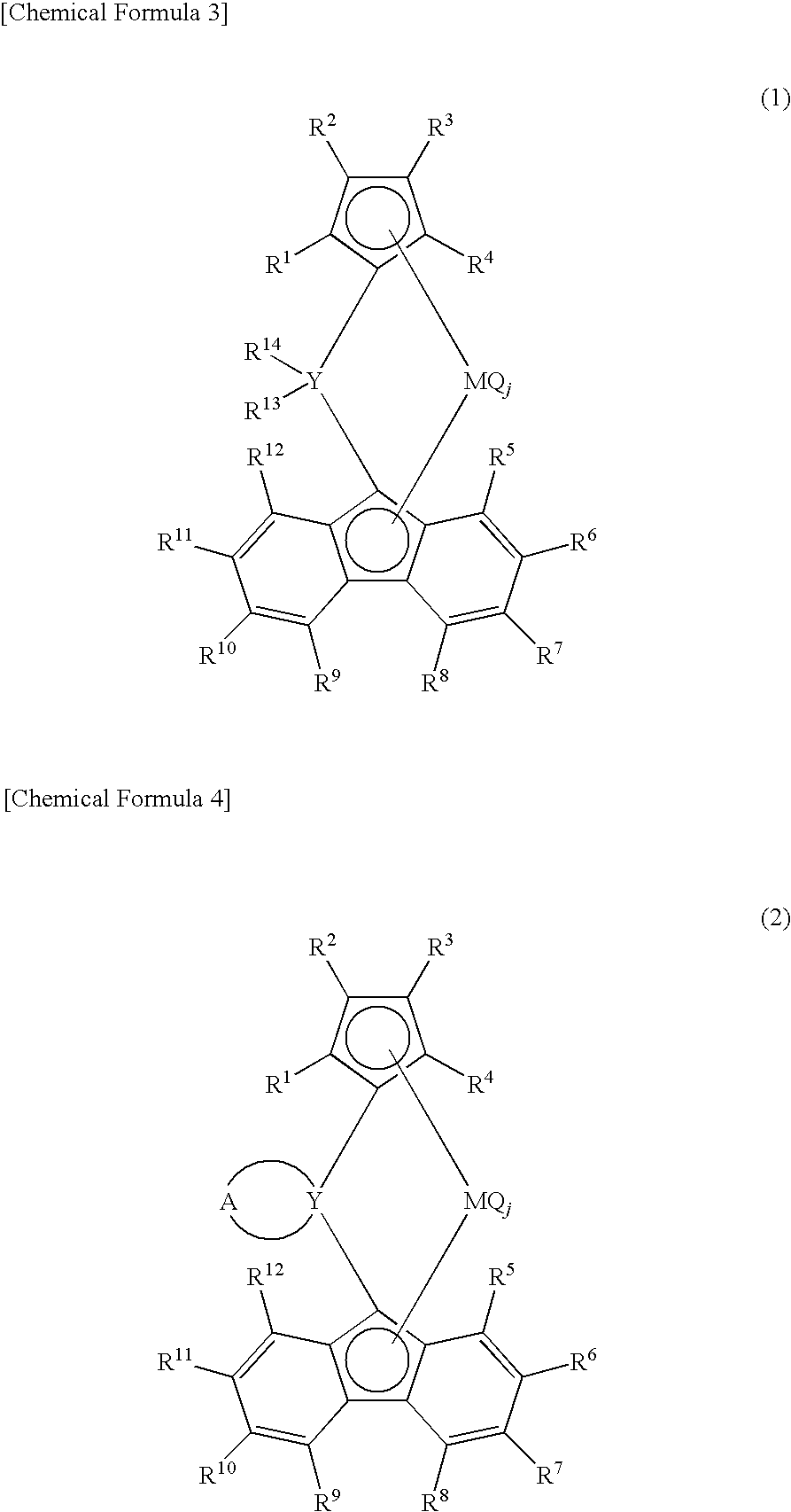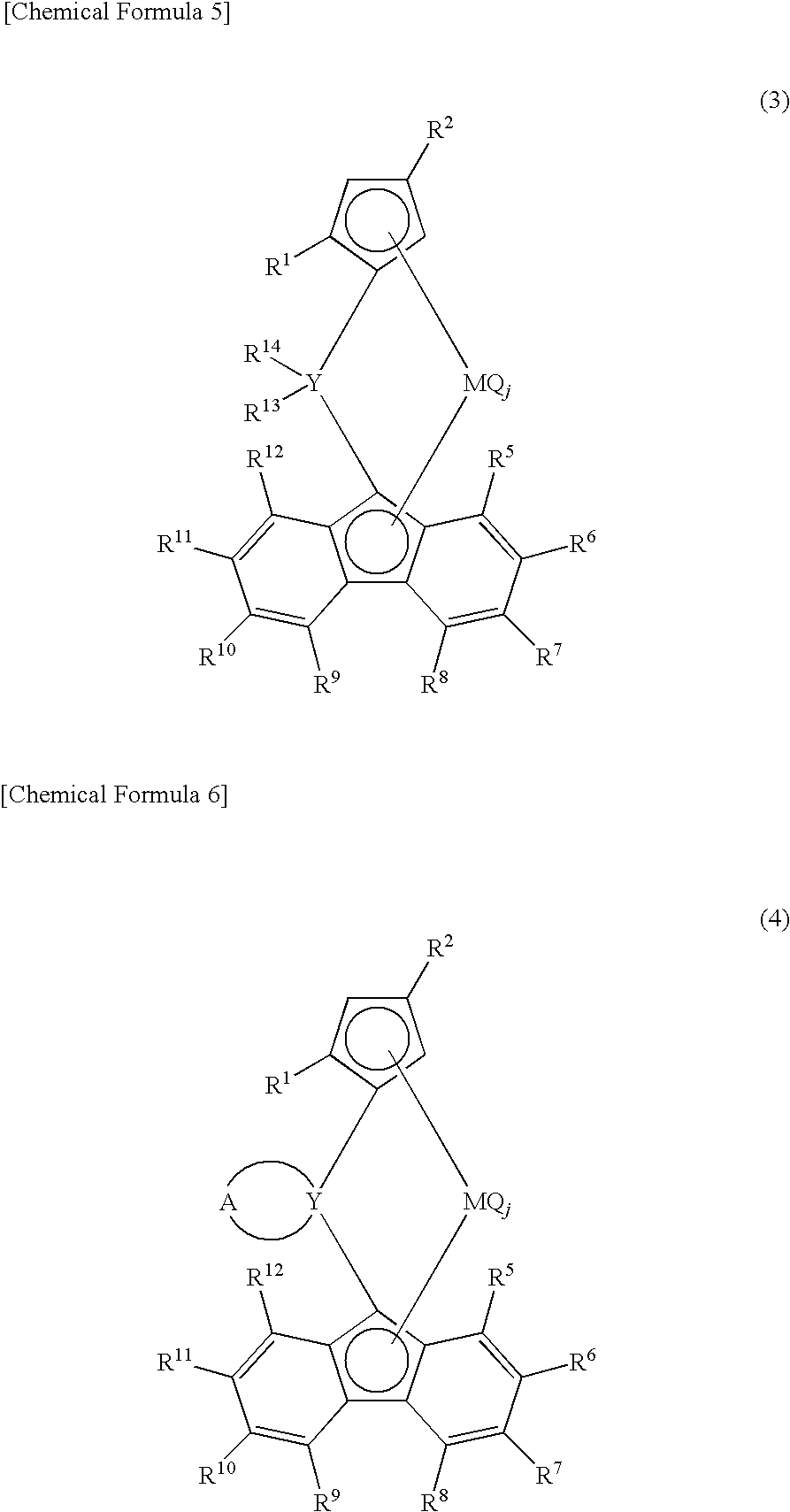Olefin-based polymers and uses thereof
a technology of olefin-based polymers and polymers, which is applied in the field of olefin-based polymers and its use, can solve the problems of adversely affecting the polymer properties, deterioration of the strength of the polymer, and deterioration of the thermal resistance of the polymer, so as to achieve excellent thermal resistance, various mechanical properties, and excellent thermal resistance.
- Summary
- Abstract
- Description
- Claims
- Application Information
AI Technical Summary
Benefits of technology
Problems solved by technology
Method used
Image
Examples
example 1a
[0224]To a glass polymerization vessel having an internal volume of 500 ml, which was equipped with a stirrer and was sufficiently purged with nitrogen, 4-methyl-1-pentene (400 ml) was introduced, and the temperature was maintained at 45° C. Isopropyl-(3-t-butyl-5-methylcyclopentadienyl)(fluorenyl)zirconium dichloride (5.1 mg), activated with 4 mmol (in terms of Al atoms) of methylaluminoxane (MAO, Albemarle Corp., a 10% toluene solution), was added thereto, and while maintaining the temperature at 45° C., polymerization was carried out for 1 hour. Methanol was introduced into the polymerization vessel to terminate the polymerization, and the polymerization liquor was poured onto 2 L of methanol containing hydrochloric acid and was filtered to recover a polymer. The obtained polymer was dried under reduced pressure at 80° C. for 10 hours to obtain 11.3 g of the polymer. The polymer had an intrinsic viscosity [η] of 1.60 dl / g, Tm=235.4° C., Mw=426,000 and Mn=155,000 as measured by GP...
example 2a
[0225]The polymerization was carried out in the same manner as in Example 1a, except that isopropyl-(3-t-butyl-5-methylcyclopentadienyl)(3,6-di-t-butylfluorenyl)zirconium dichloride (6.2 mg) was used instead of isopropyl-(3-t-butyl-5-methylcyclopentadienyl)(fluorenyl)zirconium dichloride (5.1 mg), thus to obtain 22.9 g of a polymer. The polymer had an intrinsic viscosity [η] of 1.77 dl / g, Tm=236.1° C., Mw=460,000 and Mn=191,000 as measured by GPC, and Mw / Mn=2.4. The diad isotacticity of the polymer was 99.1%, and the proportion of the decane-soluble fraction of the polymer was 0.1% by weight or less.
example 3a
[0226]The polymerization was carried out in the same manner as in Example 2a, except that decene (4 ml) was added to 4-methyl-1-pentene (396 ml), thus to obtain 23.8 g of a polymer. The polymer had an intrinsic viscosity [η] of 2.65 dl / g, Tm=229.8° C., Mw=423,000 and Mn=177,000 as measured by GPC, and Mw / Mn=2.4. The content of decene in this polymer as determined by NMR measurement was 1.5% by mole, the diad isotacticity of the polymer was 98.5%, and the proportion of the decane-soluble fraction of the polymer was 0.2% by weight.
PUM
| Property | Measurement | Unit |
|---|---|---|
| Tm | aaaaa | aaaaa |
| Tm | aaaaa | aaaaa |
| Tm | aaaaa | aaaaa |
Abstract
Description
Claims
Application Information
 Login to View More
Login to View More - R&D
- Intellectual Property
- Life Sciences
- Materials
- Tech Scout
- Unparalleled Data Quality
- Higher Quality Content
- 60% Fewer Hallucinations
Browse by: Latest US Patents, China's latest patents, Technical Efficacy Thesaurus, Application Domain, Technology Topic, Popular Technical Reports.
© 2025 PatSnap. All rights reserved.Legal|Privacy policy|Modern Slavery Act Transparency Statement|Sitemap|About US| Contact US: help@patsnap.com



